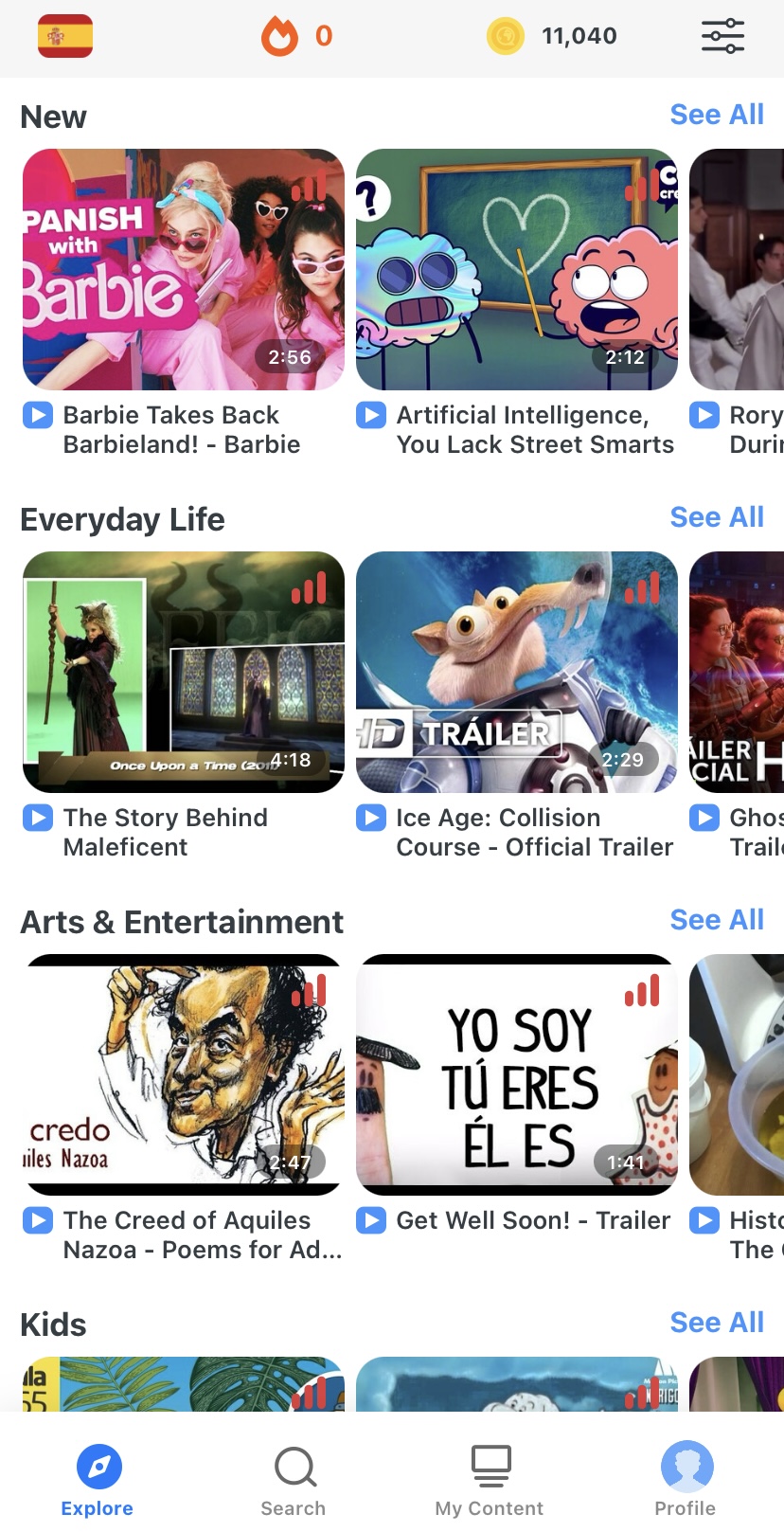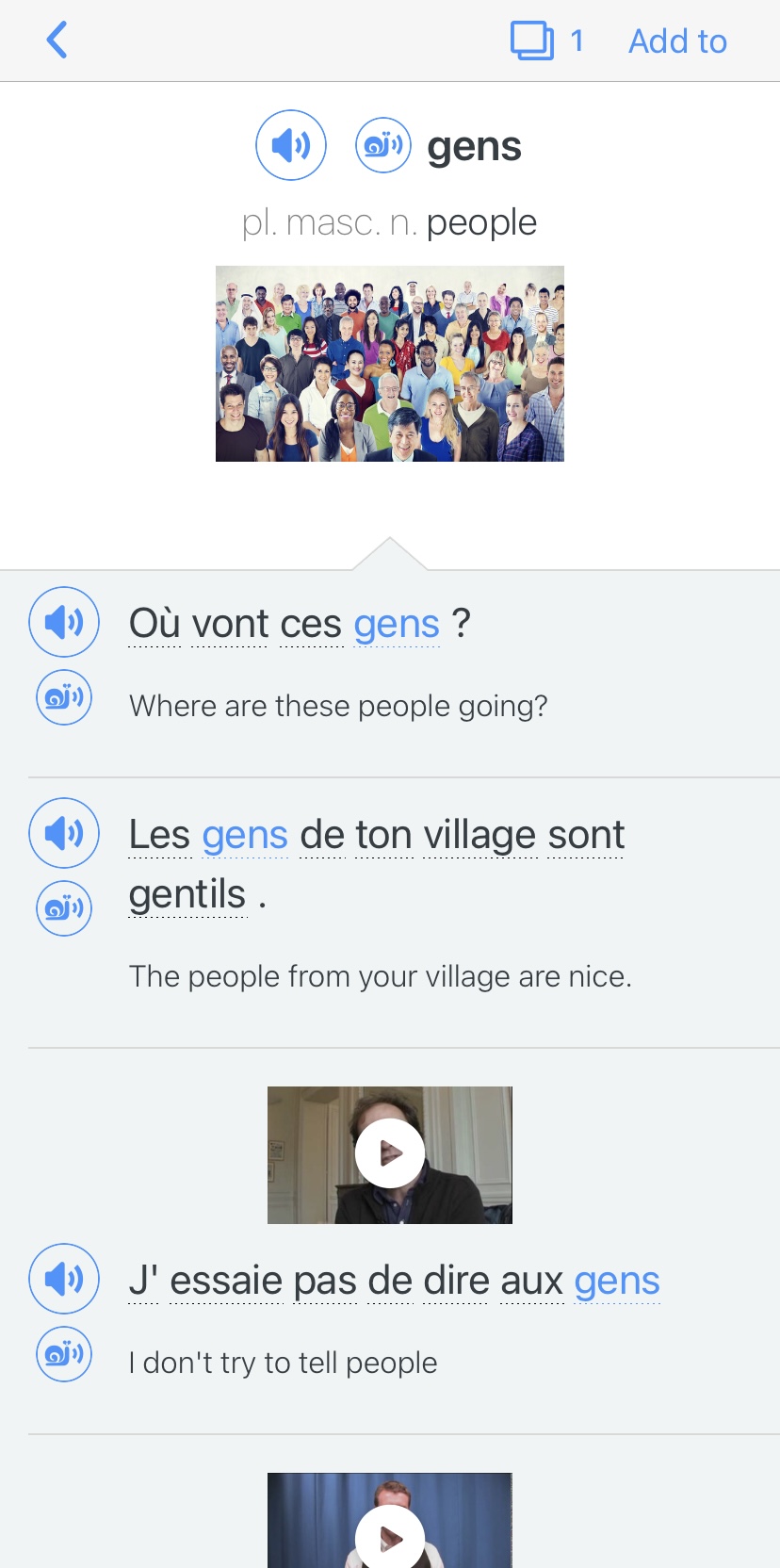The Dos and Don’ts of Learning Romance Languages

While it’s true that Romance languages like Italian and French have reputations for being a bit seductive, they actually don’t earn their name from romantic connotations.
Instead, they all derive from the language of the Roman Empire: Latin. The Empire’s influence still holds today as almost a billion people speak a Romance language as their native language, and 300 million more speak a Romance language as their second language.
If you’re ready to learn a romance language, consider these 10 dos and don’ts so you can avoid the most common rookie mistakes, and set the right priorities from the start.
Download: This blog post is available as a convenient and portable PDF that you can take anywhere. Click here to get a copy. (Download)
The Dos of Learning Romance Languages
1. Do pay attention to gender
Unlike English, nouns in Romance languages have a grammatical “gender.” A word’s gender determines what articles you use with it and how it agrees with other words. For example, an adjective that describes a feminine noun gets a feminine ending. Think of the gender as part of the actual word when learning nouns.
For example, if you’re planning to label objects around your house to build your everyday vocabulary, use color coding for different genders. Or to make it even easier on yourself, check out VocabularyStickers, which are pre-made, durable labels that already come with color coding for gender (as well as for plurals). VocabularyStickers come with more than 130 labels for everything from utensils to office supplies to your clothes and much more.
Sometimes the ending of a word will help signal its gender or plurality status. Spanish nouns, for example, often end with an –o or –or for masculine nouns, and –a or –ora for feminine ones.
Not all nouns follow this rule in each Romance language, though! Some words either give no indication of gender, or may even have an ending that doesn’t properly correlate with the general gender rules of that language.
2. Do learn the regular verb endings
There are three verb types in most Romance languages (Romanian has four), depending on how the infinitive of the verb is spelled. For example, French regular verbs end in either -er, -ir or -re; Spanish regular verbs end in either –ar, –er or –ir.
Identifying the type of regular verb is crucial to understanding how to conjugate it. You’ll need to take off the verb ending to get the verb “stem,” and add the appropriate ending depending on conjugation rules for that type of verb.
Verb conjugation is one of the first concepts you’ll encounter in your Romance language studies and it can be one of the most frustrating to master. Making a habit of finding the infinitive ending will make the complicated concept of verb conjugation that much easier as you move forward.
Pro-tip: One easy way to find the infinitive ending for any regular verb in French, Spanish, Italian and Portuguese is to search for the last -r in the word. Then it’s just a matter of dropping that letter along with the vowel that comes immediately before it (and the one afterward if it applies).
3. Do study some Latin and the IPA
If you plan on learning all the Romance languages, adding yet another language may seem daunting. However, learning a bit of Latin will prove worthwhile. Since Latin forms the base for all the Romance languages, it’s a great way to find the patterns that exist throughout each.
Furthermore, learning a bit of the International Phonetic Alphabet, or IPA, will improve your ability to comprehend and correctly pronounce any Romance language. IPA is a standardized set of symbols that represent syllable and word sounds.
Many dictionaries write the IPA next to its definition—even English dictionaries. They’re often more accurate than the phonetic guides in phrasebooks as well. Plus, the sounds for IPA cover all Romance languages with the same symbols.
So, as with Latin, if you learn IPA, you’ll have tips that apply to all the Romance languages.
4. Do pronounce vowels the same (almost) every time
One of the reasons Romance languages are considered so beautiful is due to their pure vowels, also known as monophthongs.
English speakers, and American ones in particular, don’t really use pure vowels. Nearly every Romance language does though. To identify this, take a listen to some native speakers, then compare it to non-native speakers reading a similar text. Maybe even read a text out loud yourself. What differences can you hear in the pronunciation of vowels?
You can also watch native speakers to see how they form their vowels. Often they’ll have much rounder lips than the average English speaker, for example.
One resource for this is FluentU. Each clip comes with interactive subtitles that provide on-screen definitions, audio pronunciations and other videos that use the given word.
FluentU takes authentic videos—like music videos, movie trailers, news and inspiring talks—and turns them into personalized language learning lessons.
You can try FluentU for free for 2 weeks. Check out the website or download the iOS app or Android app.
P.S. Click here to take advantage of our current sale! (Expires at the end of this month.)

By actively listening to a language’s sounds as produced by native speakers, you can quickly overcome many pronunciation hiccups that can muddy your speech.
5. Do focus on cognates
Romance languages often have a lot of cognates (words that are similar in spelling and meaning in multiple languages). Identify cognates because they can help you quickly expand your vocabulary.
For example, look at these handy cognates in Spanish:
- Actor / Actor
- Animal / Animal
- Artist / Artista
- Chocolate / Chocolate
- Hospital / Hospital
- Hotel / Hotel
- Music / Música
- Radio / Radio
Keep in mind that although these words are cognates, there are slight variations in pronunciation. Also, some of the words may have evolved differently in the two languages over time, so they may have different roots.
Also beware of “false friends,” which are words that look like cognates but aren’t. Here are a two examples:
Embarazada
- In Spanish, this word means “pregnant.”
- Many English speakers assume it means “embarrassed.”
Actual
- In Spanish, this means “current” or “up-to-date.”
- In English, it usually means “real” or “existing in fact.”
6. Do master pronunciation and tone
Pay attention to pronunciation from the start. Romance languages usually have consistent pronunciation rules, so once you grasp them, you’ll be better at understanding and being understood, which will be one of your top goals early on.
And don’t neglect tone. Have you ever noticed how it helps to take on an “Italian persona” if you’re speaking Italian, hand gestures and all?
This is because Italian is a Romance language that is known for its musical and expressive qualities. The tone and prosody (the patterns of rhythm and sound in language) of Italian play a significant role in conveying emotions, intention and meaning.
Italian’s musical quality, with strong pitch accents, means that the rise and fall of pitch and volume help to convey meaning.
Learning this from the start with give you a leg up.
The Don’ts of Learning Romance Languages
7. Don’t forget article agreement
Once you know the gender of a noun in a Romance language, then you have to add the article. Romance languages will specify “a chair” or “the chair” by using an article that agrees in gender with the noun at hand.
Articles will also signal whether a noun is plural or singular. Take this simple example from French:
- Le chien (The dog)
- Les chiens (The dogs)
Notice how the article changes in French, but not in English?
Articles can be very tricky for English speakers since English doesn’t have gendered words or changes in articles from singular to plural words. So don’t forget to pay attention to article agreement as you’re writing or speaking in your target Romance language, right from the get-go!
The more you practice, the more natural it’ll become.
8. Don’t rely on English grammar
When learning any language, it’s tempting to build a sentence word-by-word based on the sentence structure we already know in English. But remember that Romance languages are structured differently. Adjectives, for example, often come after the noun in question rather than before it.
Some verbs also don’t translate well from English. In English, we say “to be” for many sentences where Romance languages say “to have.” We “are” hungry in English, but we “have” hunger in some Romance languages. The same goes for age.
Knowing these changes can make or break how quickly you learn a language and how fluent you become.
9. Don’t substitute one romance language for another
The temptation to use cognates from one Romance language to replace the correct word in another can seem so great sometimes. After all, many native speakers of one Romance language can often understand you even if you accidentally speak another language. Still, it’s embarrassing at best and culturally insensitive at worst to do so.
With any Romance language you learn, take careful note of the differences between them as well as the similarities to keep them sorted in your head. Learn about the culture to help you identify these differences better. It’ll help you branch out into other kinds of languages in the future as well.
10. Don’t ignore formal language
Many Romance languages have formal and informal forms of address. Learn when to use each to communicate appropriately in different situations from the start, so you don’t accidentally call your boss something you should be using with closest friends.
For example, in French, to greet someone formally, you’d say: “Bonjour, comment allez-vous aujourd’hui?” (Good day, how are you?).
In standard French, you could use the much less formal “Salut, ça va aujourd’hui?” (Hi, how are you?).
Which Romance Language Should I Learn First?
Are you taking a trip to a country that speaks a certain language? Do you want to communicate better with someone in particular, or need to learn a language for work? Does one language just sound particularly beautiful to you?
If you’re asking yourself, “which language should I learn?” knowing what you want to do with a language can be as important as choosing the language to learn.
If you have a definite answer to any of the above questions, then that makes things easy. The first Romance language you should learn is the one you want to learn!
If you know you want to learn a Romance language or several Romance languages, but one isn’t necessarily more useful or captivating to you than another, then we recommend you start with Spanish. It’s one of the most widely spoken Romance languages, which means you’ll have a greater chance of putting it to good use right away. Plus, its popularity means it might be more familiar to your ears.
We also recommend you learn Romanian last, as it has the fewest similarities to the other Romance languages. Between Spanish and Romanian, order the others (French, Italian, Portuguese, Catalan and Occitan) based on your strengths, weaknesses and interests. Note that many people choose to learn Spanish, Italian and French first with Portuguese close behind.
Some people plan on learning Romance languages simultaneously. For those people, be sure to pair your languages well. You could pair a harder language with an easier one, to challenge yourself while preventing burnout. You could also pair two similar languages to build your vocabulary through cognates.
The beauty of Romance languages lies in their similar forms. However, each language requires emphasis on certain elements. French pronunciation focuses heavily on nasal sounds and dropped consonants, while the Italian language only has five vowel sounds and double consonants. Spanish and Portuguese use varied accent symbols when writing, which differ from the accents in Romanian.
Every language comes with its own set of dos and don’ts. Remembering them can greatly enhance your learning process.
Download: This blog post is available as a convenient and portable PDF that you can take anywhere. Click here to get a copy. (Download)
And One More Thing...
If you're like me and love learning languages through real-world content, FluentU is a game-changer. With FluentU, you're not just memorizing words—you’re learning how native speakers actually use them.
With our newest feature, you can now bring FluentU’s interactive tools to any subtitled content on YouTube or Netflix—or even import YouTube videos directly into your FluentU account!
You’ll also get access to a huge variety of content in our curated video library, from movie trailers to news clips, music videos, and more. The best part? FluentU makes this native-language content accessible for learners of all levels.
While you watch, you can tap on any word in the interactive subtitles to see a definition, an image, audio, and useful example sentences. Want to practice new words later? Add them to your flashcards with one click. No more pausing to look up and write down new words!
And FluentU helps you actually remember what you learn with personalized quizzes, plenty of example sentences, and extra practice with the words you find difficult.
Ready to start learning in a more natural, immersive way? Try FluentU on your computer or tablet, or download the FluentU app from the App Store or Google Play. Click here to take advantage of our current sale! (Expires at the end of this month.)











